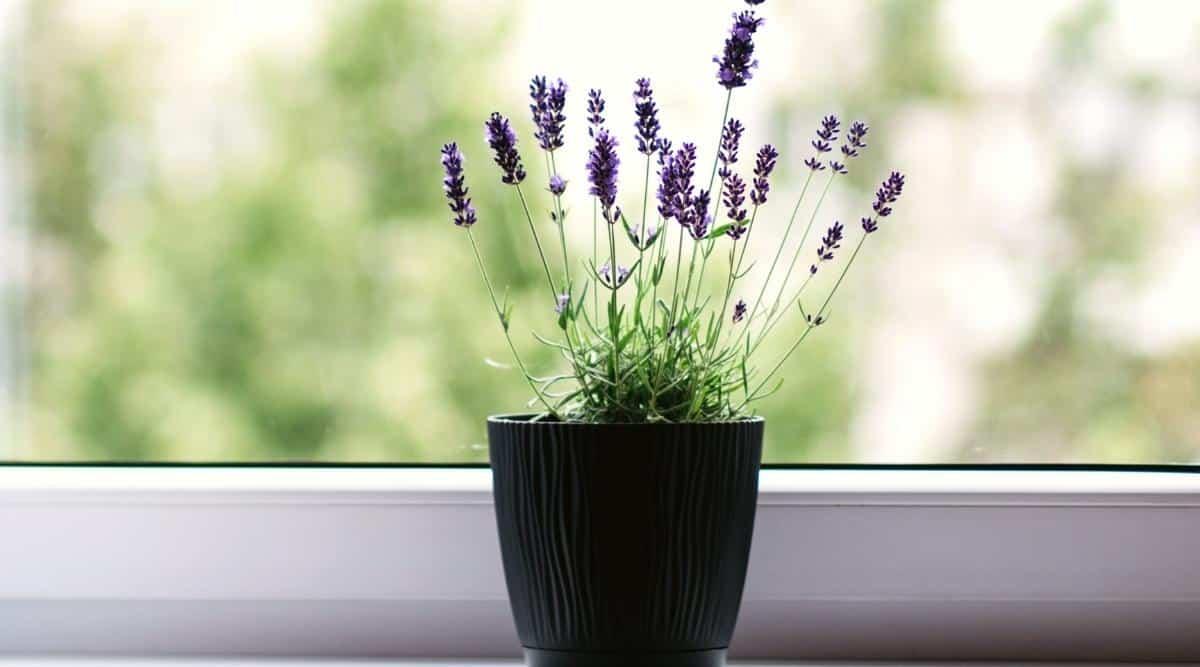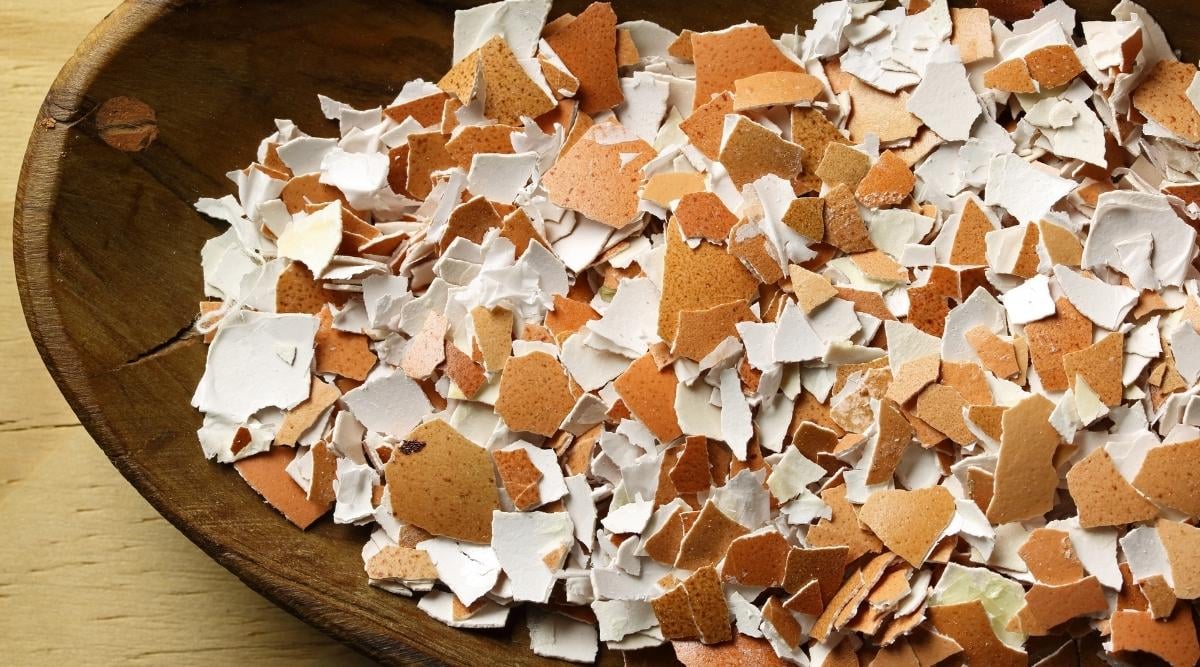Imagine walking through your doorway to a vibrant display of purple spike blossoms and a soothing perfume. Though this Mediterranean native prefers the abundant sunshine and breeze of a summer garden, you can successfully grow indoor lavender with proper placement and care.
- 6 Best Methods to Protect Outdoor Wood Furniture (2023 Guide!)
- Mushrooms in Potted Plants: Why it Happens and How to Fix.
- Eugenia Topiary Care Guide: Expert Tips to a Thriving Plant
- How to Power Outdoor Christmas Lights: 4 Tips for a Safely Lit Holiday
- Why Blink Camera Not Connecting to Wi-Fi? (How to QUICKLY Fix it)
Known for its tremendous shrubby growth outdoors, lavender can be challenging to adapt to indoor growing. Fortunately, there’s a wide variety of compact lavender varieties and soil mixes that are perfect for containers.
You are watching: 11 Tips For Growing Amazing Lavender Indoors
Lavender is undeniably alluring for any houseplant-lover who wants an aromatic, low-stress plant to add to their collection. Although it’s not a traditional houseplant, it can still thrive in the bright sunlight of a south-facing window or even beneath grow lights. Let’s dig into 11 essential tips for growing beautiful lavender in your home.
11 Tips For Thriving Indoor Lavender
Now that we’ve established that lavender can indeed be grown indoors, it’s time to walk through some of the most important factors that will impact indoor growth. Here’s my top tips for growing flourishing lavender plants indoors!
Find The Brightest Area Possible

The most important thing you can do for your indoor lavender plant is to provide it with as much sunlight as possible. A south-facing window is ideal. Lavender is naturally a sun-loving plant that looks pretty pathetic in the shade.
Pale foliage, fewer flowers, and less fragrance are common symptoms that your plant isn’t getting enough sunlight.
If needed, you can always supplement with grow lights. If your home is shaded with trees or other structures, artificial lighting— particularly LED lights— can drastically increase indoor growing success.
Choose Compact Varieties

When you imagine a lavender bush, most people think of the big, recognizable, purple-flowered Provence lavender. While these types of lavender produce the most traditional looking flowers, they tend to grow far too large for containers.
Thankfully, there are over 400 other cultivars to choose from. Among them are a wide range of dwarf and compact options that are perfectly suited for growing in pots inside your house. Our favorites include:
Most of these dwarf types average just a foot tall, making them perfect for a 10-12” diameter decorative pot in your windowsill. With proper care, they will bloom profusely throughout the growing season. They also retain fragrant foliage during their dormant winter phase.
If you live in a hot or humid climate, compact Spanish “butterfly” lavenders like ‘Kew Red’, ‘Fathead’, and ‘Ballerina’ may be better suited to your home in the summertime.
Opt For a Terra Cotta or Ceramic Pot

Indoor lavender does best in a breathable earthen pot. Terra cotta, clay, or ceramic are the best materials because they are natural, thick, and durable. Unlike plastic or metal, these pots won’t bake the roots in the summer or freeze them in the winter.
They provide the perfect amount of insulation from both heat and cold while simultaneously ensuring airflow through the root zone.
Read more : 13 Boredom Busters to Keep Your Dog Entertained in the Yard
You should also be sure that your pot is large enough to allow for future growth. Lavender pots should be a minimum of 12” in diameter and depth. If you don’t want to up-pot for a year or more, make sure the container is at least twice the size of the existing root ball.
Lastly, ensure that your pot has a large bottom drainage hole and catchment saucer. Avoid “self-watering” containers that have an attached bottom saucer, as these can cause water to pool up, leading to root rot.
Plant in Well-Drained Soil

Lavender is renowned for its tolerance of poor soils. Unlike common houseplants and garden vegetables, it actually prefers soils that are sandy, gravelly, and low in fertility. In an indoor pot, the drainage of the soil is especially important. You need to ensure that water passes through the pot as quickly as possible and doesn’t become waterlogged or soggy in the process.
Avoid using potting soil or compost. Instead, look for soil mixes including:
- Peat moss
- Coco coir
- Horticultural sand
- Pumice
- Vermiculite or Perlite
There are many plant specific soil mixes you can choose from that are commercially available. Optionally, you can add clay pebbles or pea gravel in the bottom of the pot as an added insurance against root rot.
Make The Soil Alkaline

Lavender’s native Mediterranean soils are alkaline and calcareous. In other words, this herb prefers soil with a pH between 7.0 and 8.0 and with ample calcium availability.
To alkalize the soil, consider adding crushed eggshells or garden lime (calcium carbonate). A tablespoon of either choice about once per month is generally enough for a potted plant.
Avoid Cold Air Drafts

While there are some varieties that are more cold hardy than others, lavender in general doesn’t love extreme cold. During the main growing season (spring, summer, and fall), potted lavender shouldn’t be exposed to cold air drafts from nearby doors, windows, or air conditioning units.
This can slow the growth or cause it to go into dormancy, which means no flowers! Instead, keep your plant slightly back from a south-facing window that is well-insulated from drafts.
Don’t Roast Your Plant

While lavender loves warmth, it’s important that it doesn’t get blasted by a nearby heater vent during the winter. Lavender is considered a herbaceous perennial, which means the upper parts of the plant die back after flowering.
As it enters its dormant phase (hopefully after your fall pruning), it should have only a small mound of foliage near the base. During the winter months, the plant needs to focus its energy on root development. Too much heat can cause it to prematurely push up new foliage growth before spring comes around.
Instead, keep it in a cooler room for the winter where it can still get some sunlight. This will help it to prepare to flourish with new growth and its first flush of flowers in the spring.
Prune Twice Per Year

Like outdoor lavender, plants grown indoors need to be pruned. Giving your potted lavender a twice-annual haircut will ensure that it stays compact, non-woody, and aesthetically pleasing. It also encourages more lush foliage and floral growth.
Read more : How To Tilt Patio Umbrella? (It’s Easy: Follow These Simple Steps)
The first pruning should occur in the spring after the first flush of flowers. Once the blooms begin to fade, cut the plant back by about half. Use this opportunity to shape the soft, green growth into your desired form. Some indoor gardeners prefer a conical shape or a spherical mound.
In the fall, you should prune again after its last flush of flowers begins to fade. This can be a little bit harder to determine with indoor plants, so you may want to monitor the daylight and perform this pruning around the time of the fall equinox.
Cut back by up to two-thirds of its growth, leaving just a couple inches of green stem above the woody crown. Again, take this chance to train your plant in a specific shape. Be careful not to cut into the woody portions of the plant.
It’s also recommended to prune the plant back by about one-third before you transplant it into a new container. This encourages a focus on root development in the pot.
Only Water When Soil is Dry

Lavender is a naturally drought-tolerant plant that doesn’t enjoy super moist soil. Depending on your climate and home humidity, indoor lavender may only need to be watered once every couple of weeks.
It prefers to dry out between waterings and then receive a large flush of irrigation at once. If you’re ever grown pothos houseplants, this will sound familiar.
The best way to know if potted lavender is thirsty is to check the soil moisture with the “finger test”. Insert your dry finger about 4-6” deep in the pot. If it comes out with a lot of soil stuck to it, the plant has plenty of water and should be left alone.
If your skin comes out fairly clean, it is time to water. Pour water around the base of the plant until it filters out of the bottom drainage hole, then stop and let your plant soak it up.
In the event that your plant gets so thirsty that it wilts, don’t worry! Lavender can usually handle a period of drought and will readily perk up with a generous watering.
Beware of overwatering. It is far more likely that beginner gardeners will overwater than underwater. Too much soil moisture can cause the plant to start rotting from the roots. It can also predispose your herb plant to a variety of other diseases. When in doubt, let irrigation filter through the soil before drenching it again.
Rotate With Each Watering

Like any potted plant, indoor lavender can start to angle all of its growth toward the light. If you want to maintain a nice, tidy habit, then rotate the plant about a quarter turns each time you water. This will encourage even growth from all sides.
Give it Time to Acclimate

Just like an indoor plant moving outdoors, an outside plant moving into your home needs some time to adjust. If your transplanted lavender has spent most of its time outdoors in a nursery, it will need a period to acclimate to the conditions of your home.
You may want to leave the plant outside during the day and bring it in at night. Over the course of a week, you can slowly wean it off outdoor light and temperatures so it can adjust to its new home by your window.
Source: https://gardencourte.com
Categories: Outdoor

